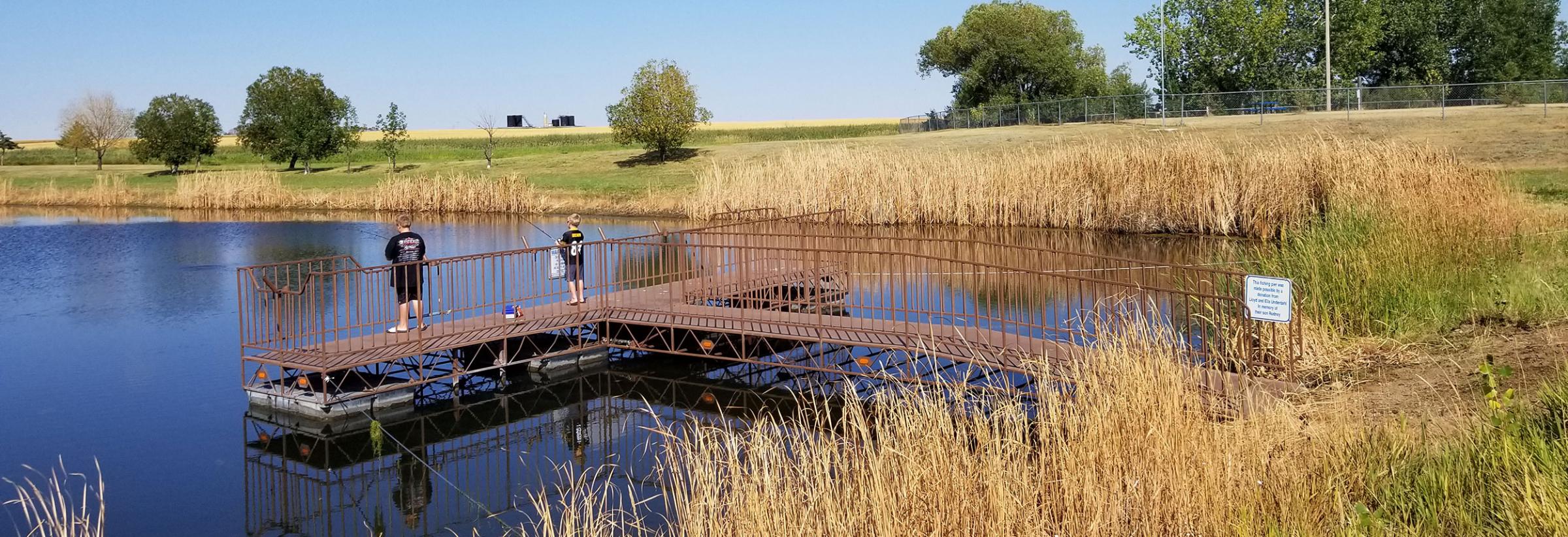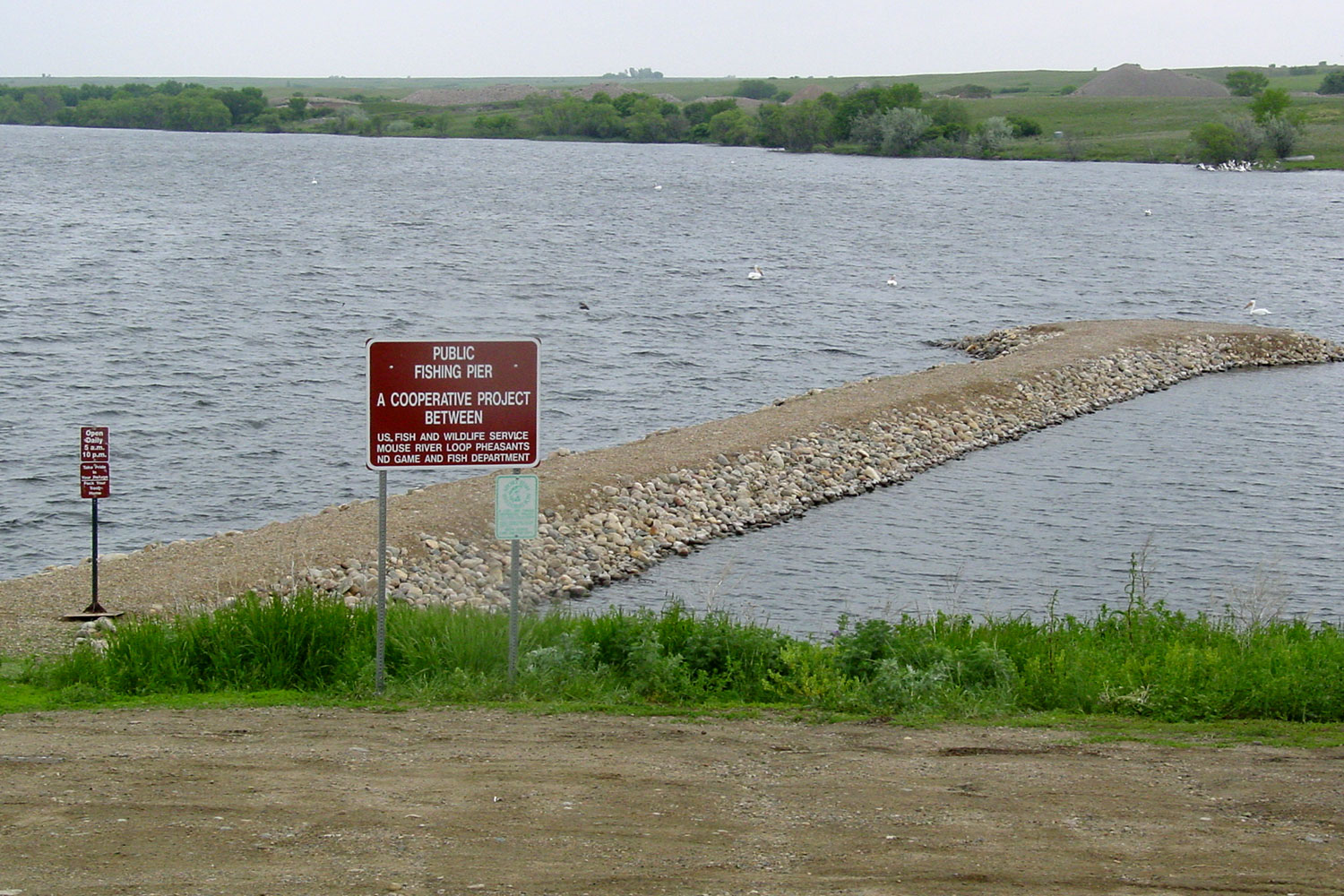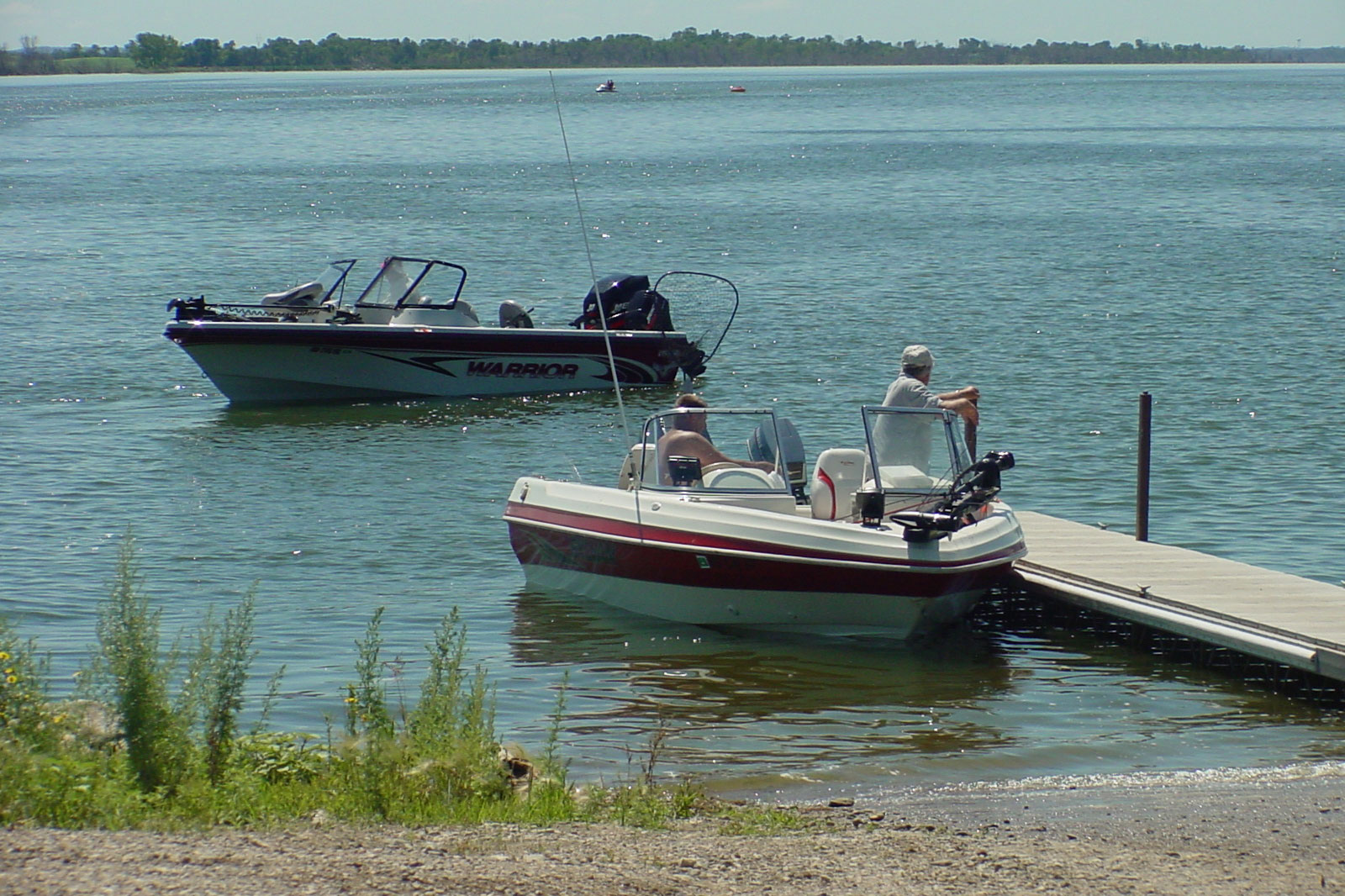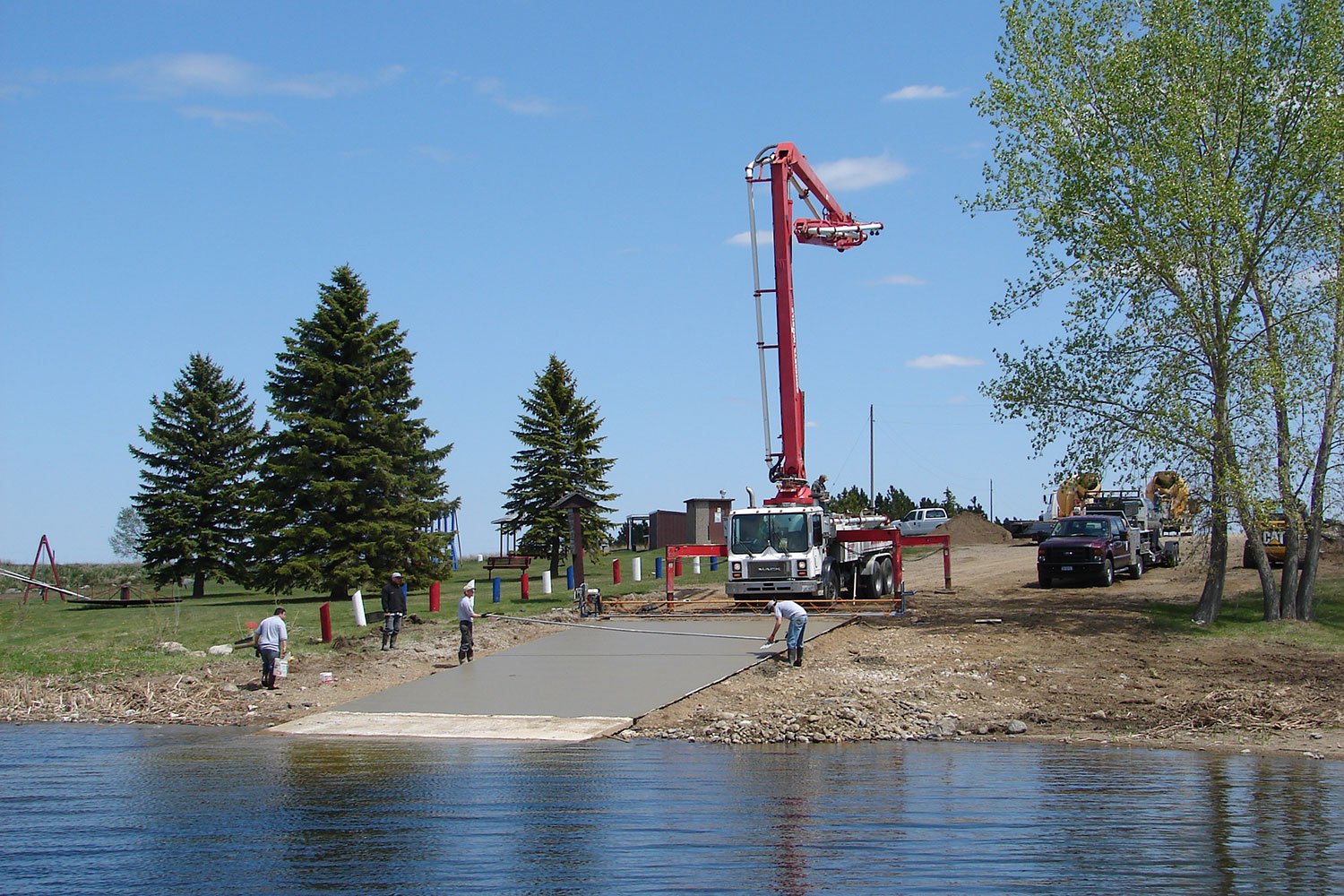Docks. Piers. Boat Ramps.
These words are often substituted and used interchangeably by the public when discussing a recent fishing trip or asking questions about what facilities might be available at a lake they plan to fish. While all three are interrelated and associated to angling and boating, each one describes a facility that has its own distinct function and serves a completely different purpose than the others.
In the following, we will look at docks, piers and boat ramps, describe some of the variations and provide some examples of each.
Piers
A fishing pier is a platform or structure that extends into or over the water from the shoreline to provide additional public fishing opportunities. Piers are often necessary for anglers to gain access to deeper water, beyond the cattails, weeds and submergent vegetation along the shoreline which makes it difficult to fish.
There are basically two types of piers found in North Dakota, floating and earthen/rock. The majority of the 250 fishing piers scattered across the state are the floating type. Most floating piers are T-shaped, have handrailing around the perimeter and are supported by foam-filled floats mounted to the bottom of the frame. These are the most popular as they can accommodate fluctuating water levels, can be moved to different locations on a given lake, or to a new lake, and can be removed during winter to alleviate damage caused by ice expansion and movement.
Rock and earthen piers are usually not as prone to ice damage, but they are generally harder to fish from, more difficult to retrieve and net fish due to large rocks and are vulnerable to surface grass and weed growth. The benefit of a rock/earthen pier is that it doesn’t have to be installed or removed annually and has a lower maintenance cost then a floating pier.
No matter the type, fishing piers are extremely popular with the public and allow access to ponds, lakes and weed-choked areas that would otherwise be inaccessible.
Docks
Courtesy docks sit on or alongside a boat ramp and are designed to provide a safe means to aid and facilitate anglers when loading or unloading their boats. Courtesy docks can be divided into two general categories, primary docks and secondary docks. Primary docks are located on the boat ramp and are straight “finger type” docks that allow anglers to get in/out of their boats without having to crawl over the bow or walk into the water while launching.
While there are many variations to their construction, the most popular are those made of a galvanized steel frame, fiberglass decking, vinyl bumper system and adjustable outer leg support. The adjustable leg support allows the dock to be leveled (all directions) and include either a wheel or skid base, depending on the type of ramp or if an anchor system is available.
Secondary docks can be straight, T-shaped or U-shaped and are located off to the side of the ramp with the main purpose being to provide anglers a place to drop someone off to go get the vehicle or temporarily tie up their boat if they are by themselves without impacting the main ramp. Most secondary docks are floating as there is not a firm or solid base to support them. Like piers, courtesy docks are extremely popular and make it possible for someone to safely launch and retrieve their boat with or without help of another person.
Boat Ramps
A boat ramp is an inclined, hard surface facility that is constructed and maintained for the purpose of launching and retrieving boats. It is constructed both above and below the waterline and is the flat hard surface that an angler backs his/her vehicle and trailer down.
The three main types of boat ramps are gravel, metal or concrete and the type constructed depends on the water body and amount of boating use. Gravel ramps, often referred to as primitive launch sites, are found on smaller lakes or rivers and are an inexpensive and quick way to provide access for smaller boats or canoes.
Slide-in metal ramps come in bolt together sections that are put together up on dry ground and then pushed into the water. They can be installed or removed quite easily but are also susceptible to buckling and damage during winter as the ice expands and/or shifts during ice-out.
Concrete boat ramps are the most common and popular as they provide a firm, solid base and are not easily damaged or affected by ice or other variables. The Game and Fish Department utilizes a “pour and push” method of construction whereas the first slab is poured on dry ground and then pushed out into the water. The second above water slab is then simply poured in place to compete the ramp. The end product is a solid concrete ramp from top to bottom with one splice at the water line.
A single lane ramp is typically 14-20 feet wide, while a double lane ramp is 30 feet wide or more with a courtesy dock installed down the middle. Slope is extremely important, and the preferred slope of a ramp is between 12-14%. A ramp steeper than that can be dangerous, while a shallower or flatter one will force the user to back their vehicle into the water and usually makes loading and unloading more difficult.
Fishing continues to be very popular in North Dakota. Thankfully our anglers have nearly 300 fishing waters with almost 400 public boat ramps that provide the needed access to these tremendous fishing opportunities.




